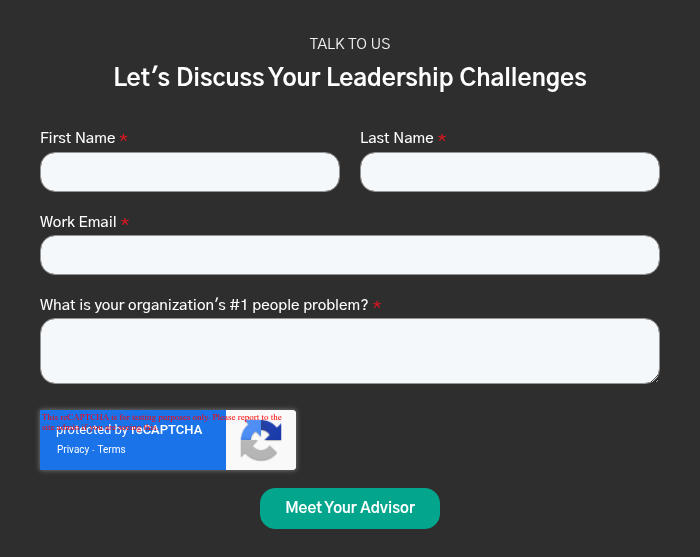What Is the External Candidate Review at The Metiss Group?
April 21st, 2025
4 min read
By Cyndi Gave

Hiring someone based on one assessment score is like diagnosing a broken arm with a thermometer. Sure, it might tell you if someone’s running hot (literally), but it won’t say anything about the screaming pain in their elbow. Yet many companies lean on single-assessment hiring because it’s simple, easy to understand, and gives them a neat little number.
But humans aren’t neat little numbers. We’re walking, talking contradictions with layers and nuance and all sorts of unexpected quirks. That’s exactly why we created the External Candidate Review (ECR) at The Metiss Group.
The ECR is our way of helping clients get a well-rounded look at a candidate — without needing a three-day psychological excavation or asking folks to sacrifice their Saturday to fill out bubble sheets.
In this article, we'll discuss:
- Finding the Balance: Insight Without Fatigue
- The Four Sciences of the ECR Hiring Assessment
- Why The ECR Matters
- When (and How) to Use The ECR
- Using ECR For Onboarding After The Hire
Finding the Balance: Insight Without Fatigue
I’ve been on the receiving end of those endless assessments. Back when I was applying for jobs, I once had to take a series of assessments that took three hours to complete. Afterward, the consulting psychologist told me the results showed I was entrepreneurial… and slightly hostile. My response? “Of course I was hostile. You made me take assessments for three hours!”
So yeah — I get it.
That’s why our External Candidate Review™ is built to give enough information to spark better conversations without dragging candidates through a mental marathon.
The Four Sciences of the ECR Hiring Assessment
We use four science-backed tools to give a more complete picture of the person you’re about to hire. Each one reveals a different angle of how someone operates.
1. Behaviors: How They Tend to Show Up
Behavioral assessments tell us how someone prefers to behave — especially when they’re not trying to impress anyone. Think of this one as the “how” behind their actions. It measures four dimensions:
- Are they extroverted and task-focused?
- Extroverted and people-oriented?
- More predictable, steady, and people-focused?
- Or more reserved and focused on compliance or detail?
This stuff matters because we’ve all had those exhausting days where we had to act like someone we’re not. When people are forced to adapt all day, every day, you’ll burn them out.
2. Motivators: Why They Show Up
Just because someone’s a people person doesn’t mean they’re motivated by people. You can’t guess at motivation based on behavior — and this is where many single-science hiring assessments go sideways.
The motivators assessment gives insight into what drives a person. There are six total in the ECR:
- Theoretical: motivated by knowledge and curiosity
- Utilitarian: motivated by money and efficiency
- Aesthetic: motivated by form and function
- Social: motivated by helpfulness
- Individualistic: motivated by power and leadership
- Traditional: motivated by order
When trying to match a person to a job, we focus on the top two or three. That’s where you find the real juice for culture fit.
For instance, if someone thrives in a mission-first, service-oriented environment, dropping them into a hyper-competitive sales org might leave them feeling empty, even if they can do the job.
3. Hartman Value Profile: What They Can Do
Here’s where it gets really interesting. The Hartman Value Profile looks at how someone thinks: not just their opinions, but how they value different aspects of life and work. It uses deductive science to measure how they evaluate situations, themselves, and others.
This tool helps us see raw personal skills: their capacity to learn, lead, solve problems, and adapt. You wouldn’t ask someone to change their personality, but with the right support, they can develop new skills. This one tells us where that potential lives.
4. Critical Thinking: How Fast They Can Process It All
If TriMetrix (which includes behaviors, motivators, and Hartman) tells us how many lanes are open on the highway, then the Watson-Glaser Critical Thinking Assessment tells us the speed limit.
It measures three things:
- Can they recognize assumptions?
- Can they evaluate arguments without bias?
- Can they draw logical conclusions?
Someone might have all the traits you want on paper, but if they’re slow to process or overthink every decision, they’ll slow you down in a fast-paced environment.
Critical thinking can improve with practice. But it takes intention and time.
Why The ECR Matters
When all four of these tools are combined, you don’t just get a pile of data. You get a 360-degree view of a human being: how they show up, why they work the way they do, what they’re capable of, and how they process the world.
This isn’t about perfection. No one will ever line up exactly with the job avatar, and that’s fine.
What you will get is a meaningful comparison: how does this person show up relative to the national mean? How do they compare to other candidates? Are you hiring the best fit — or just the person who looks the best out of a weak talent pool?
When (and How) to Use The ECR
You don’t need to run these assessments on everyone. The best time is when you’ve narrowed the list and want to really understand your top contenders.
We charge $500 per candidate for the full ECR. That includes all four assessments plus a detailed debrief from one of our advisors. They’ll walk you through how to interpret the data, what to ask in the interview, and what to listen for in the responses.
If your team is doing this kind of evaluation frequently (say, hundreds of candidates per year), we also offer ECR Certification. After completing that training, the per-candidate cost drops to around $300. You’ll still have access to our experts if you want a second opinion, but most folks get really good at interpreting the results themselves.
Using ECR For Onboarding After The Hire
The ECR isn’t just useful for selection. It’s a powerful tool for onboarding, too.
Once someone joins your team, behavior experts at The Metiss Group can debrief them on their own results. Then we compare their results with their manager’s and figure out how they’ll communicate best, where misunderstandings might happen, and how to avoid stepping on each other’s toes. It’s all baked into The Hiring Process Coach™ service.
If you want to go deeper, The Accountability System™ uses these same assessments to guide the first year of the working relationship. This helps speed up the learning curve and skips the awkward “walking on eggshells” phase where nobody wants to be too honest too soon.
Final Thoughts
The External Candidate Review™ is a smarter, more human way to make hiring decisions. Because at the end of the day, hiring isn’t about finding the perfect robot. It’s about finding the right person — and setting them (and your team) up to succeed.
Here at The Metiss Group, we have helped hundreds of clients use the ECR to make the right hiring decision. If you’re ready to see how the ECR can make a difference at your company, let’s talk.

Topics: